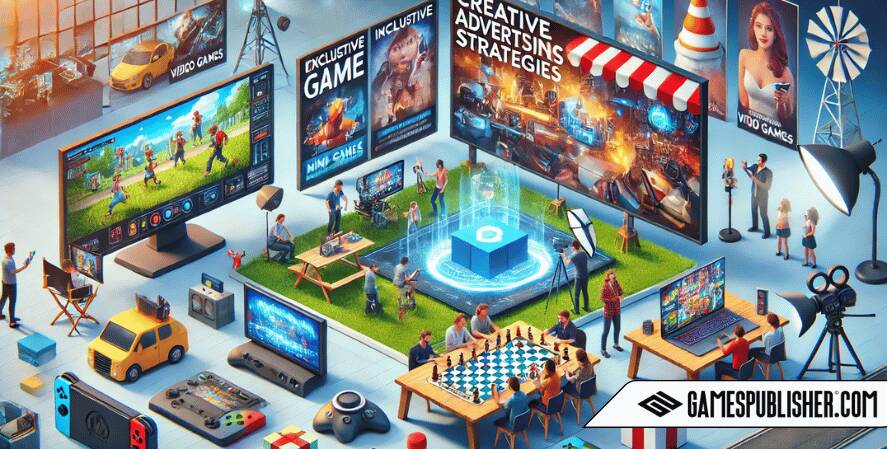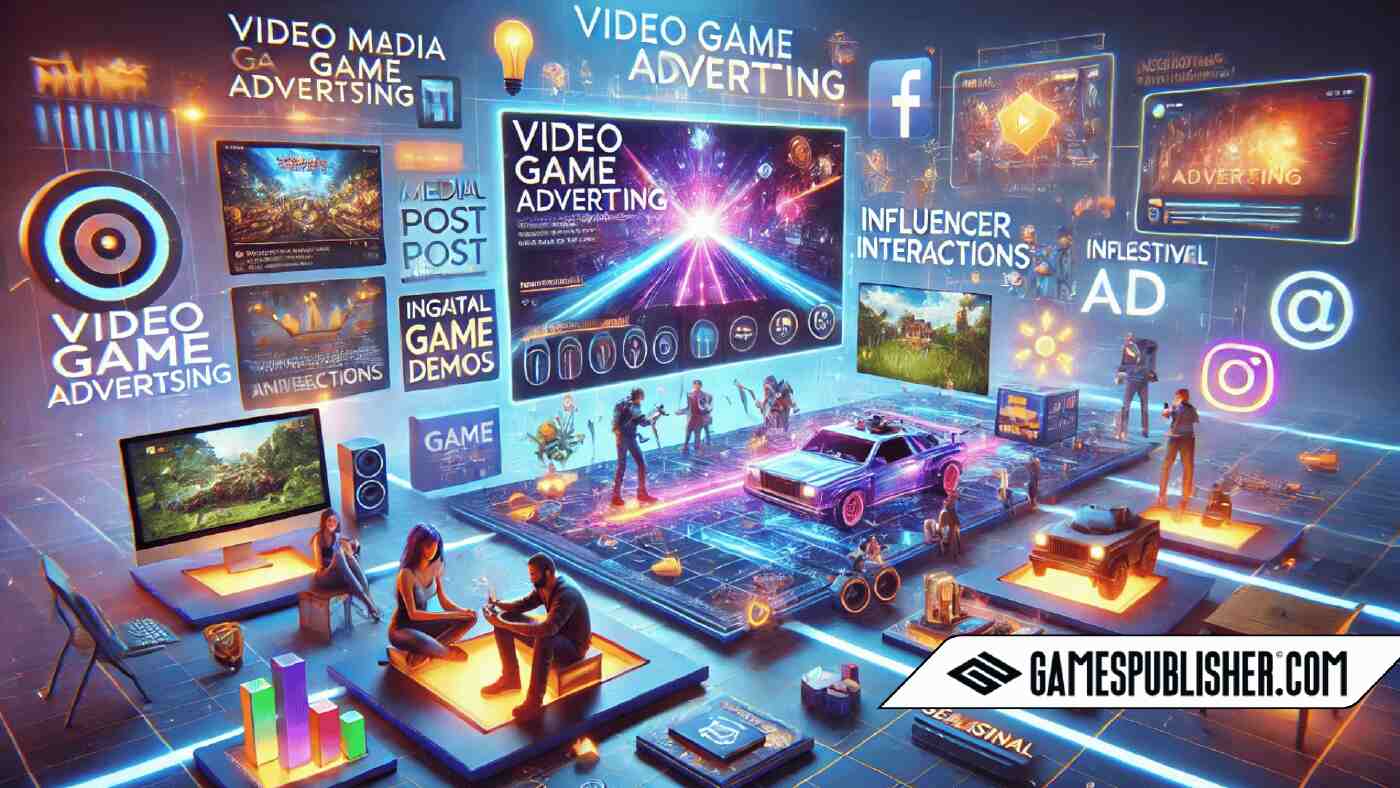Gamespublisher.com is your go-to resource for game development and publishing. In the competitive world of gaming, your game’s success not only depends on its quality but also on how well you market it.
This article explores crucial post-launch efforts. It focuses on game ads that resonate with target players.
The Importance of Post-Publishing Advertising

Why Advertising Matters
Advertising plays a pivotal role in the lifecycle of a game. After the intensive process of game development and the next thrill of launch day, the focus must shift to keeping the game in the public eye.
Good advertising keeps your game attracting new players. It also keeps existing ones interested.
Impact on Sales and Engagement
Advertising amplifies sales and deepens player involvement. A well-executed campaign can reignite interest in a game, leading to a surge in downloads or purchases. Additionally, ads can extend a game’s life.
They do this by adding new content and updates. This keeps players engaged.
Understanding Your Target Audience

Market Research
Identifying and understanding your target audience is crucial for any successful advertising campaign. Use various methods such as surveys, focus groups, and social media analytics to gather data on potential customers.
Knowing their preferences, behaviors, and demographics will help you tailor your ads better.
Segmenting Your Audience
Segmenting your audience allows for more personalized and effective advertising. You can categorize players by age, location, gaming tastes, and spending habits.
Then, you can make ads that resonate more with each group. This segmentation leads to higher engagement and better conversion rates.
Player Personas
Creating detailed player personas involves developing fictional characters that represent your ideal players. These personas should include their gaming habits. They should also include their favorite genres and pain points.
Tailoring your ads to these personas can make your campaigns better. They will be more relatable and effective.
Choosing the Right Advertising Channels

Social Media Advertising
Social media platforms like Facebook, Twitter(X), Instagram, and TikTok are powerful tools for game advertising. These platforms offer targeted advertising options that can reach specific demographics.
Engage with your audience through posts, stories, and live streams to build a community around your game.
Influencer Marketing
Teaming up with gaming influencers and streamers elevates your game’s profile. Influencers have dedicated followings and can create authentic content showcasing your game.
This type of endorsement often carries more weight with potential players than traditional ads.
Paid Search and Display Advertising
Using Google Ads, YouTube ads, and display networks can place your game in front of a vast audience. These platforms allow for targeted advertising based on keywords, demographics, and user behavior.
Crafting compelling ad copy and eye-catching visuals is essential to capture the attention of potential players.
Content Marketing
Leveraging blogs, videos, and podcasts can enhance your game’s visibility. Creating valuable content related to your game, such as behind-the-scenes videos, developer diaries, and strategy guides, can attract and engage potential players.
Sharing this content through various channels can drive traffic and increase awareness.
Creative Advertising Strategies

Trailer and Gameplay Videos
Producing high-quality trailers and gameplay videos is crucial for showcasing your game. These videos should highlight the game’s features, storyline, and unique selling points.
A well-crafted trailer can generate excitement and anticipation, leading to higher engagement and sales.
Interactive Ads
Designing immersive ads enables potential players to experience the game firsthand. These ads might include mini-games, quizzes, or demos that give users a taste of the gameplay experience.
Interactive ads can capture attention and drive higher conversion rates.
Exclusive Previews and Betas
Offering early access to your game through previews and betas can generate buzz and gather valuable feedback. Players who get a sneak peek often share their experiences, creating word-of-mouth promotion.
This strategy can build anticipation and a sense of exclusivity around your game.
Seasonal and Event-Based Promotions
Timing your ads with holidays, events, or game-related news can boost their impact. Seasonal promotions and themed events can attract players looking for new and exciting content.
Aligning your advertising efforts with these periods can result in higher engagement and increased sales.
Community Building and Engagement

Social Media Engagement
Maintaining active and engaging social media profiles is essential for community building. Share new content, reply to comments, and interact with your followers.
Hosting Q&A sessions, live streams, and giveaways can further strengthen your relationship with your audience.
Forums and Online Communities
Participating in or creating forums for your game provides a platform for players to discuss and share their experiences.
These communities can become a valuable source of feedback and a way to foster a sense of belonging among players. Engaging with these communities can enhance player loyalty and retention.
User-Generated Content
Encouraging players to create and share content related to your game can increase its visibility and appeal. User-generated content, such as fan art, videos, and mods, can showcase the passion and creativity of your community.
Highlighting and sharing this content can inspire others to join in and contribute.
Measuring Advertising Effectiveness

Key Metrics to Track
Tracking key metrics such as click-through rates, conversion rates, and return on ad spend is crucial for evaluating the success of your advertising campaigns.
Active sentence: These metrics show you how well your ads are performing and where you need to make improvements.
Using Analytics Tools
Utilizing analytics tools like Google Analytics, Facebook Insights, and in-game analytics can help you gather and analyze data.
These tools offer detailed reports on user behavior, engagement, and conversion rates. They let you make informed decisions about your advertising.
Adjusting Strategies Based on Data
Based on the performance data, adjust your advertising strategies to optimize results. This might involve reallocating budget to more effective channels, refining ad copy and visuals, or targeting different audience segments.
Refine your approach to maintain it’s effective and efficient advertising efforts.
Conclusion
In summary, a well-rounded advertising strategy post-publishing is essential for the success of your game. Understanding your target audience is key. Choose the right ad channels. Use creative strategies.
Build a strong community. Measure effectiveness. This will make your game stand out in the competitive gaming industry. Developers and publishers refine strategies through data analysis and trend tracking.
Loading survey...

